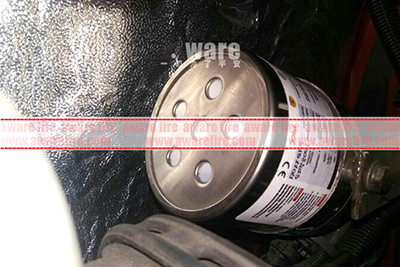Thể loại
- Blog của chúng tôi (59)
- Hỗ trợ công nghệ (15)
đầu máy xe lửa có lịch sử phát triển hàng trăm năm và nhiều năm đổi mới kỹ thuật. Hôm nay, Chúng tôi nói về phòng cháy chữa cháy đầu máy xe lửa. đầu tiên, chúng ta nên nói về kiến thức về đầu máy xe lửa.

Bản thân đầu máy đường sắt không có thiết bị điện, whether it is a passenger locomotive or a freight locomotive; we must connect many carriages to form a train, and then it can move only after being pulled by a locomotive. vì thế, the locomotive is the basic power of railway transportation.
There are many kinds of locomotives for the railway. According to the original power of the locomotive, there are Steam locomotives, diesel locomotives, and electric locomotives.
The application of steam locomotives has a 170-year history. It converts the heat energy of a fuel (than đá, dầu, gỗ) into mechanical energy through a steam engine,
It converts the heat energy of a fuel (than đá, dầu, gỗ) into mechanical energy through a steam engine, to make the train move. The components of a steam locomotive are the boiler, the steam turbine, the frame, the coal and water cars, the coupler, the buffers, and the brakes.
The steam locomotives are characterised by low thermal efficiency, high energy consumption, and low conveying capacity, and the people of the world no longer use them.
A diesel locomotive is a locomotive powered by a diesel engine, Its characteristics are high thermal efficiency, thời gian làm việc liên tục dài, and suitability for long-distance operation.
The diesel locomotives have two styles: electric drive and hydraulic drive.
The electric locomotive itself does not carry electric energy, nó phụ thuộc vào việc thu được năng lượng điện từ dây xích trên đường đi. and the traction motor drives the locomotive forward.
Nhà máy điện gửi 110 đến 220 kV three-phase power frequency AC power through the transmission line to the railway traction substation, nguồn cung cấp nào 25 đến 27.5 kV single-phase power frequency AC power to the catenary for electric locomotives.
An electric locomotive mainly contains the vehicle body, thiết bị chạy, dưới khung, khớp nối và thiết bị đệm, braking device, and a complete set of electrical equipment.
The electric locomotive has the advantages of large power, tốc độ khởi động nhanh, giỏi leo núi, and easy to implement high-speed and heavy-load.
Hiện tại, due to the extensive development of electric power and the continuous development of new energy power, đầu máy điện đã trở thành phương tiện được sử dụng rộng rãi nhất.
Đường sắt cao tốc, xe điện ngầm, and light rail we use are all driven by electric locomotives.
Tuy nhiên, bất kể loại đầu máy nào, including an electric locomotive, chúng sẽ tạo ra rất nhiều nhiệt khi hoạt động.
There are many pipeworks on a locomotive, making the internal space limited, which can easily lead to thermal runaway after long periods of travelling, ageing wiring, and hot weather.
The loss of a locomotive caused by fire after a thermal runaway is huge, và thiệt hại kinh tế là hàng ngàn đô la. vì thế, chúng ta cần xem xét vấn đề phòng chống cháy nổ đầu máy, và cần lựa chọn hệ thống PCCC đầu máy phù hợp.
Như chúng tôi đã đề cập trước đó, there is a lot of pipework and limited space, so the fire extinguishing system for locomotives should have the following characteristics:
Hiện tại, large-scale gas, bọt, and water-mist fire extinguishing systems are not suitable for railway locomotives. hai sản phẩm còn lại nhiều khả năng là sự lựa chọn PCCC đầu máy, là: aerosol fire protection hoặc là hệ thống triệt tiêu ống lửa.
Bằng văn bản, let us compare these two systems: the Aerosol Fire Suppression System and the Fire Trace System.
The Aerosol system has the following main advantages:
The fire trace system has the following main advantages:
vì thế, from the point of view of safety and convenience, the aerosol fire extinguishing system will be more suitable for railway locomotives.
Many people are worried that they don’t know how to install aerosol systems on railway locomotives. The installation on a railway locomotive is simple. The steps are as follows:
Magnet-attached mounting is a simpler and more convenient way of mounting. We mount the fire extinguishing device directly to the iron plate of the locomotive engine.
The main steps in wiring are as follows
Our dealers around the world have many installation cases. In the following, we list some of them:
Choosing an aerosol fire suppression system as a railway locomotive fire protection solution is feasible.